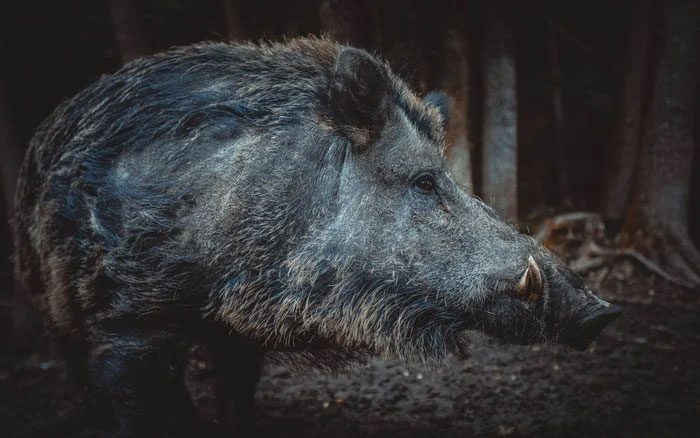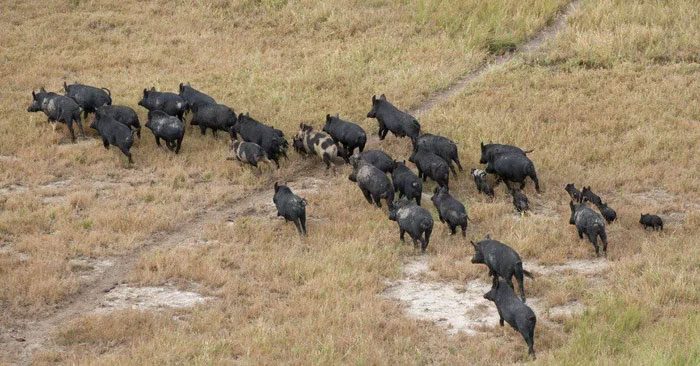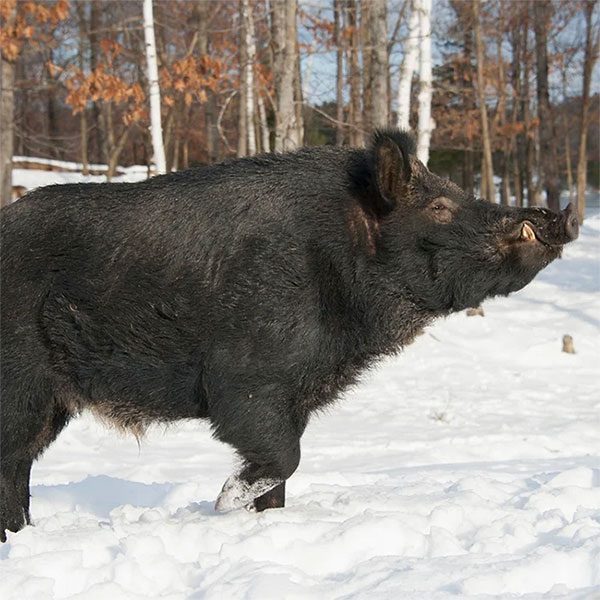The current estimate of total damages caused by wild pigs in the United States is approximately $2.5 billion. Each year, over $100 million is spent trying to reduce their numbers, but the damages remain high and seem to be increasing.
Domestic pigs are often perceived as pink, and many of them have an incredibly cute appearance, with even some smaller breeds being kept as pets.
However, when these very pigs escape from human care and revert to a wild existence, the situation becomes much more serious. Wild pigs (sometimes referred to as wild boars, hybrids of domestic pigs and wild boars) are not only a nuisance but are extremely dangerous and cause billions of dollars in damages each year in the United States.

Pigs are categorized as wild and domestic, with domestic pigs being domesticated wild boars, belonging to a subspecies of wild boar. They were first domesticated by the Chinese around 4,900 B.C., although some studies suggest that the wild boar of Western Asia may have been domesticated as early as 6,000 to 7,000 B.C.
Wild Pigs in North America
Historically, pigs did not exist in America until they were brought over by European settlers. They were released on ships and sometimes escaped upon arrival, with both wild and domestic pigs running into the foothills, leading to the domestic pigs gradually becoming the wild boars of America.
The American wild pig belongs to the Eurasian wild boar species. Columbus first brought 8 domestic pigs to the Caribbean in 1493 to serve future food needs. Later, Spanish explorer Hernando de Soto introduced 13 domestic pigs and wild boars to Florida in 1539.
Since then, domestic pigs and wild boars have been sporadically introduced to the Americas. Starting in 1890, many Eurasian wild boars and Russian wild boars were brought to the United States for hunting purposes.
Since then, the wild pig population has spread across most states in the U.S., causing significant damage to all types of agricultural crops and infrastructure.

Wild pigs in America have narrow, deep-set eyes, long and wide ears, thick and short necks, with each weighing between 600 to 700 kg, and their heads accounting for one-third of their total body length. They are often described as a “large-headed monster”. Additionally, they can move quickly, with a maximum running speed of 40 km/h.
According to the USDA: “Wild pigs can reproduce faster than any other large mammal; females begin breeding at around 8 months of age and can have 2 litters, each consisting of 4–12 piglets every 12–15 months.”
Currently, the wild pig population in the U.S. is estimated to be between 6 to 9 million, causing various problems at all levels. These pigs inflict billions of dollars in damage to property and agriculture each year in the U.S., primarily due to their foraging behavior.
Wild pigs forage by using their snouts and tusks to root up the ground, which can cause serious ecological damage to native wildlife and disrupt root systems of plants due to their foraging activities.
Besides crop and environmental damage, they are also potential hosts for at least 34 pathogens that can be transmitted to livestock, wildlife, and humans.

In 2013, the 36-acre Willow Wild cemetery in Texas was heavily impacted, with grass uprooted, soil dug up, and tombstones cracked, caused by none other than wild pigs.
Damage Estimates
The current estimate of total damages caused by wild pigs in the United States is approximately $2.5 billion. Each year, over $100 million is spent trying to reduce their numbers, but damages remain high and seem to be increasing.
For example, a farmer in Georgia, Adam McLendon, has about 8,000 acres of farmland primarily for peanuts, corn, and cotton. Each year for the past 15 years, McLendon has estimated spending at least $100,000 related to wild pigs solely on his property. When the pigs find a cultivated field, they will root it up, creating depressions that must be filled and leveled before replanting more crops.
The problem is so significant that there are government programs specifically aimed at addressing wild pig issues. For instance, the National Wild Pig Damage Management Program by APHIS was established in 2014 to attempt to mitigate damages. The program aims to reduce the number and range of the wild pig population while monitoring them nationwide.

Wild pigs carry at least 30 pathogens and 37 parasites, which can pose a direct threat to human life. For example, in the infamous “spinach contamination” incident in the U.S. in 2006, 205 people across 26 states and Canada were infected with E. coli bacteria, resulting in 3 fatalities. Research showed that the pigs brought this deadly bacteria to spinach fields in California, leading to the production of 42,000 bags of ready-to-eat spinach that caused many illnesses after consumption.
When in direct contact with wild pigs, they can be extremely dangerous. After many generations living in the wild, wild pigs have developed sharp tusks and unpredictable behavior, especially when humans are around.
In fact, they are known to be very aggressive towards humans and pets, even when they are not necessarily cornered. Furthermore, wild pigs can cause vehicle collisions, damaging cars and injuring occupants, while the pathogens they carry can spread through water or crops. There have been over 100 documented cases of wild pigs attacking people in the United States since records began in 1825.


















































